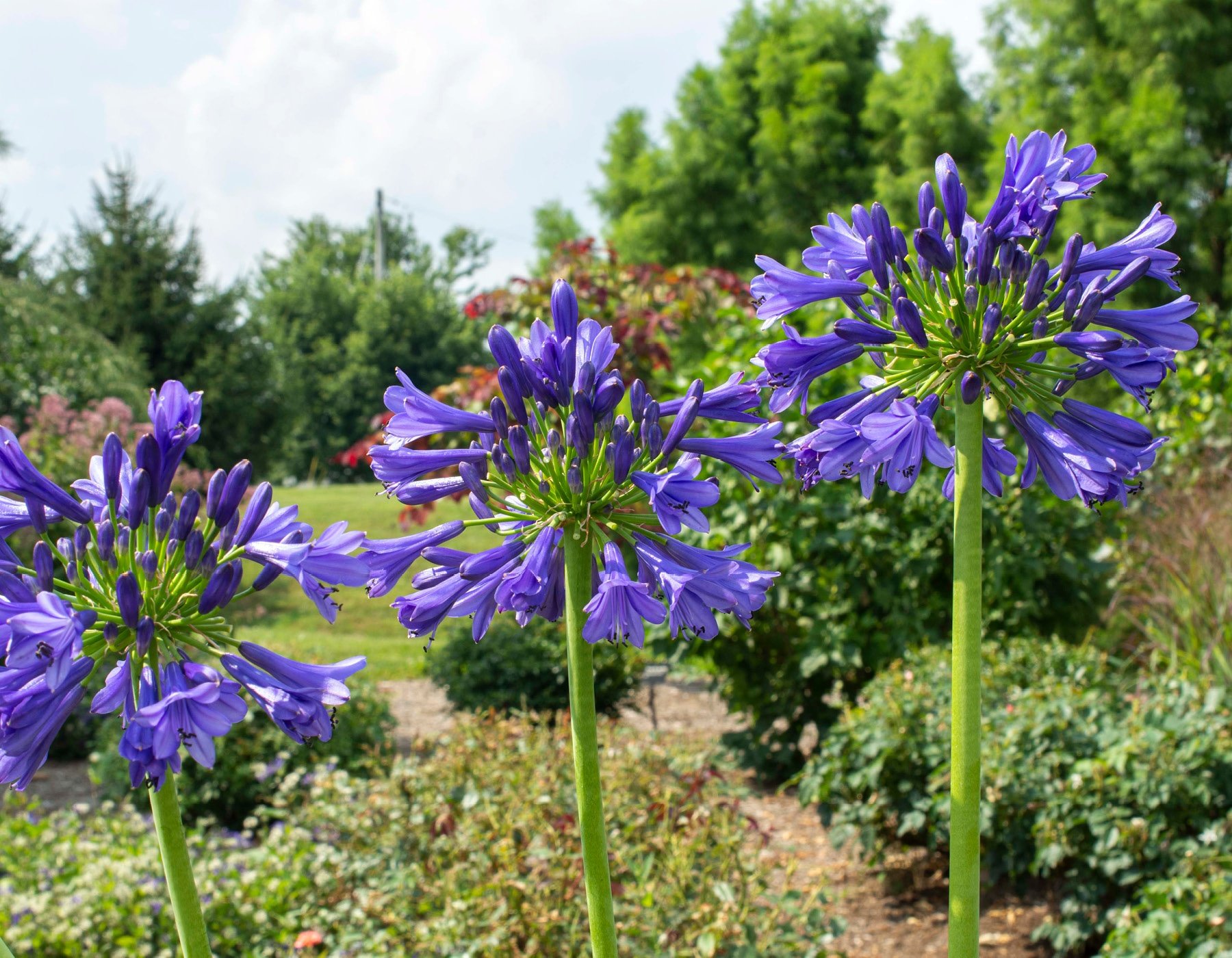Expanding Agapanthus: A Complete Guide to Beautiful Blooms
Grasping the Art of Agapanthus Treatment: Vital Actions for Healthy And Balanced Development and Vibrant Flowers
In the world of gardening, the growing of agapanthus stands as a fulfilling undertaking for those that look for to support these classy blooming plants. With their striking blossoms and stylish vegetation, agapanthus has caught the attention of gardeners worldwide. However, achieving optimal development and vivid blooms calls for a nuanced strategy that incorporates different necessary actions. From choosing the best variety to mastering trimming strategies, the trip towards cultivating prospering agapanthus plants is diverse and holds the essential to unlocking the complete possibility of these organic gems.
:max_bytes(150000):strip_icc()/agapanthus-growing-guide-7368912_06ba-bf1fa268243b451387986fbd1e2433b3.jpg)
Choosing the Right Agapanthus Selection

When picking the appropriate Agapanthus variety for your yard, consider elements such as climate suitability, bloom color, and growth habit. Agapanthus, commonly referred to as Lily of the Nile or African lily, comes in a variety of colors varying from tones of purple and blue to white. Select a flower color that complements your existing garden scheme to develop an unified landscape. Furthermore, think about the climate in your region to ensure the Agapanthus variety you pick can grow in your particular conditions. Some varieties are much more forgiving of cool temperatures, while others prefer warmer environments. Recognizing the growth habit of various Agapanthus selections is critical for correct placement within your garden. Some ranges have a clumping growth practice, perfect for containers or boundaries, while others have a more spreading nature, appropriate for ground cover or mass plantings. By carefully evaluating these variables, you can select the perfect Agapanthus selection to improve the elegance of your garden.
Suitable Growing Conditions
Taking into consideration the ideal ecological demands is vital for successful Agapanthus farming. Agapanthus plants are sensitive to cool temperatures and must be shielded from frost during winter months.
To guarantee healthy and balanced development and vibrant blooms, plant Agapanthus bulbs at a depth of regarding 2-4 inches and space them 8-12 inches apart. Mulching around the base of the plants assists maintain moisture and subdues weed development.
Watering and Feeding Tips
Preserving appropriate moisture degrees and offering vital nutrients are essential elements in the care regimen for Agapanthus plants. When it comes to watering Agapanthus, it is important to strike a balance. These plants prefer constantly wet soil yet are at risk to root rot if overwatered.
Feeding Agapanthus is crucial for promoting healthy development and respected blossoms. Use a well balanced fertilizer, such as a 10-10-10 formula, in the very early spring as brand-new growth emerges. By complying with these watering and feeding pointers, you can guarantee your Agapanthus plants flourish and produce dynamic, long-lasting blooms.
Trimming Strategies for Agapanthus
Trimming look at here Agapanthus plants at the proper times and with appropriate techniques is essential for maintaining their health and advertising optimal development and blooming. The excellent time to trim Agapanthus is in late winter or very early spring before new development emerges. Beginning by eliminating any kind of yellowing or dead leaves near the base of the plant. Cut them as short as possible without damaging the emerging shoots.
Deadheading invested flowers can additionally redirect the plant's power into producing more flowers instead than setting seeds. If you desire to accumulate seeds for proliferation, leave some flowers to fully grown and completely dry check my reference on the plant.
Remember to make use of clean, sharp tools to make accurate cuts and reduce the danger of presenting diseases. Agapanthus. Routine pruning will certainly assist maintain your Agapanthus looking check my source healthy and balanced and neat while ensuring a bountiful display screen of gorgeous blossoms
Dealing With Common Parasites and Illness
After making sure correct pruning methods for Agapanthus, it is crucial to resolve typical bugs and illness that can affect the health and vitality of these plants. One common pest that affects Agapanthus is the Agapanthus gall midget.
Furthermore, Agapanthus plants can suffer from origin rot if they are planted in inadequately draining pipes dirt. By being watchful and taking punctual action versus conditions and insects, you can help your Agapanthus plants flourish and create dynamic blooms. Agapanthus.

Final Thought
In verdict, grasping the art of agapanthus care includes picking the appropriate selection, providing ideal growing problems, appropriate watering and fertilizing, suitable pruning strategies, and addressing common pests and illness. By adhering to these crucial steps, you can make sure healthy and balanced growth and vibrant blossoms for your agapanthus plants. Remember to consistently monitor and maintain your plants to advertise their general well-being and durability.
To guarantee healthy development and vivid flowers, plant Agapanthus bulbs at a deepness of about 2-4 inches and room them 8-12 inches apart. By following these watering and feeding suggestions, you can ensure your Agapanthus plants thrive and generate lively, lasting blooms.
One usual insect that affects Agapanthus is the Agapanthus gall midge. Furthermore, Agapanthus plants can suffer from origin rot if they are planted in poorly draining pipes soil. By adhering to these necessary steps, you can ensure healthy and balanced growth and vivid flowers for your agapanthus plants.